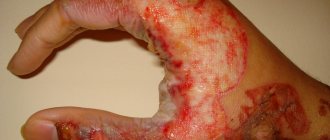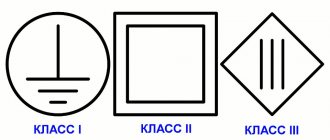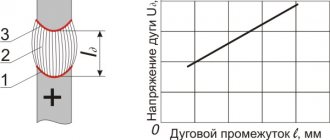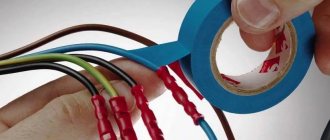I was electrocuted. 220 volt. why am I alive? what could happen to me? I accidentally grabbed the wire from the switch with my fingers. (by the metal wires) and felt something jerk. my hair stood on end and I immediately threw away what was in my hands..
nothing can happen to me anymore?) 9 years
I was electrocuted. 220 volt. why am I alive? what could happen to me? I accidentally grabbed the wire from the switch with my fingers. (by the metal wires) and felt something jerk. my hair stood on end and I immediately threw away what was in my hands..
nothing can happen to me anymore?) 9 years
Electrical injury refers to damage to organs and systems due to electric shock. The main causes of death from electric shock are respiratory arrest and cardiac arrest. After a strong electric shock, if a person survives, complications may develop from the cardiovascular, central nervous system, visual impairment, hearing impairment, etc.
Most often, accidents occur when:
- ignorance or non-compliance with safety rules when using electrical appliances
- faulty household appliances in everyday life, electrical equipment in enterprises
- broken wires of high-voltage lines
The degree of damage to the human body depends on the way the current passes through the body, the strength and voltage of the current, the time of exposure, health status, age, as well as the timeliness of providing first aid to the victim.
The effects of electric currents on the body
- Thermal - due to the resistance of body tissues, electrical energy turns into thermal energy, causing electrical burns at characteristic points of entry and exit of current, which are called current signs. As thermal energy passes through tissue, it changes and destroys it.
- Electrochemical - leads to thickening and gluing of blood cells, the movement of ions and a change in the charge of protein molecules, the formation of vapors and gases. The affected tissues take on a cellular appearance.
- Biological - the functioning of the skeletal muscles of the heart, nervous and other systems is disrupted.
Symptoms of Electric Shock
- An unexpected fall of a person on the street or an unnatural throwing away from a power source by an invisible force
- Loss of consciousness, convulsions
- Pronounced involuntary muscle contractions
- Loss of neurological functions - memory loss, impaired understanding of speech and vision, impaired orientation in space, changes in skin sensitivity, pupil reaction to light.
- Ventricular fibrillation and respiratory arrest—irregular pulse and irregular breathing
- Burns on the body with sharply defined boundaries/
Damage severity factors
Electrical injuries at home are divided into the following types:
- One of the most dangerous options is a full loop. It includes 2 arms and 2 legs, hand-to-hand as the current flows through the heart.
- No less dangerous is the hand-head, when the current passes through the brain.
- According to the sources of impact: lightning, power lines, household appliances, sockets, electrical weapons.
- Type of current: direct and alternating. Variable is considered more dangerous because it can cause muscle cramps, which can lead to cardiac dysfunction.
- By health factors: the presence of certain chronic diseases, in particular the cardiovascular system.
- By voltage:
- Duration of contact with the source of impact.
| Current (mA) | The body's reaction when exposed to the hand |
| 0,9-1,2 | Barely perceptible impact |
| 1,2-1,6 | Goosebumps and tickling of the skin |
| 1,6-2,8 | Tension in the wrist |
| 2,8-4,5 | Deterioration of mobility in the forearm |
| 4,5-5,0 | Forearm muscle cramps |
| 5,0-7,0 | Shoulder muscle cramps |
| 15,0-2015,0-20 | The hand does not leave the power source |
| 20-40 | Painful muscle cramps throughout the body |
| 50-100 | Cardiac arrest |
| More than 200 | Deep burns |
Table of the body's reaction when the hand is exposed to electric shock of varying strengths
How to properly design corners on a ceiling plinth
Consequences of electric shock
Nervous system
- loss of consciousness of varying degrees and duration;
- memory loss (retrograde amnesia);
- convulsions;
- weakness and weakness;
- dizziness and headache;
- violation of thermoregulation;
- flickering in the eyes, blurred vision.
When nerves are damaged, sensitivity and motor activity in the limbs change, trophism is disrupted, and pathological reflexes arise. The passage of current through the brain leads to convulsions and loss of consciousness; in some cases, damage to the respiratory center leads to respiratory arrest.
High voltage current leads to profound disturbances in the activity of the central nervous system, inhibition of the respiratory center and regulation of cardiac activity, which leads to electrical lethargy, imaginary death, when it seems that breathing and heartbeat are absent, but in fact the activity of vital systems is reduced to a minimum. Timely initiation of resuscitation measures leads to successful restoration of systems operation.
The cardiovascular system
In most cases, disruptions in cardiac activity of a functional nature are observed:
Electrical shock to the heart muscle can lead to disruption of contractile function, leading to fibrillation, when the myocardial fibers begin to contract in an irregular rhythm, and the heart cannot pump blood, which is equivalent in severity to cardiac arrest. Damage to blood vessels leads to bleeding.
Respiratory system
Inhibition or cessation of respiratory activity occurs due to damage to the respiratory center in the brain. The passage of current through the lung tissue leads to contusion and rupture of the lungs.
Sense organs
- hearing loss;
- noise in ears;
- touch disorder;
- rupture of the eardrum;
- middle ear injury;
- keratitis;
- choroiditis;
- cataract.
Striated and smooth muscles
- Spasm and contraction of muscle fibers can lead to cramps.
- Strong contraction of skeletal muscles can result in fractures of the spine and tubular bones.
- Spasm of the muscular layer of the vascular wall leads to increased pressure or myocardial infarction (in the case of spasm of the cardiac arteries).
Long-term complications
- CVS: disturbance of cardiac conduction, heart rhythm, obliterating endarteritis, arteriosclerosis;
- Nervous system: neuritis, encephalopathy, trophic ulcers, autonomic changes;
- Sense organs: cataracts, hearing and vision impairment;
- Musculoskeletal system: contractures (limited range of motion, inability to bend a limb), deformities.
Types of local electrical injuries
Local electrical injuries (hereinafter referred to as ME) are pronounced local violations of the anatomical integrity of tissues, including bone, caused by the damaging effects of electric current and arc. In most cases, ME is cured, and the functions of the victim’s organs are partially or completely restored. Cases of death from ME are quite rare, most often death occurs from a severe burn. The danger of ME and the complexity of treatment are assessed according to the following factors:
- location, nature and extent of tissue/tissue damage;
- the body's response to local damage.
Types of electric shock
The most typical types of ME are:
- Electrical burns, which are the result of thermal aggression of electric current as it flows through the body;
- Electrical signs (marks), represented by compacted areas of pale yellow color in the form of sharply defined spots on the skin of an electric shock victim. May appear as a cut or puncture wound, or as a charred area on the body. In the area with the electrical mark, the skin loses sensitivity;
- Metallization of the skin, caused by the penetration into the upper layers of human skin of microparticles of metal melted during the burning of an electric arc, or charged metal particles from baths with electrolyte;
Additional Information. When a short circuit occurs or the switch is turned off under load, a powerful heat flow is generated, which initiates the melting of the metal of the current-carrying elements. The dynamic forces that arise during a short circuit spray particles of molten metal, which fly around at high speed.
- Mechanical damage as a result of uncontrolled sharp convulsive muscle contractions during electric shock. There are dislocations of joints and ruptures of ligaments, ruptures of nerve fibers and blood vessels;
- Electroophthalmia.
Let's take a closer look at electrical burns as the most common ME.
Electrical burns
Electrical burns account for almost 60% of all MEs. According to the conditions of origin, electrical burns are divided into two categories of injuries:
- current (or contact) burn injuries that occur during the flow of electric current directly through the human body when a person comes into direct contact with current-carrying elements;
- arc burns caused by damage from an electric arc.
In Fig. Below is an example of an arc flash captured by a CCTV camera.
Arc Flash
Electrical burns occur in electrical installations with low voltage, not exceeding 2 kV. Higher voltages usually produce a spark or arc that causes burns. According to the severity of the injury, electric burns are divided as follows:
- I degree - minor damage to the upper layers of the skin epidermis, redness and swelling of the skin without blistering. The injury can be easily healed at home and sometimes does not even require treatment;
- II degree - along with the usual damage to the upper layer of the skin, blisters filled with yellowish exudate appear (in everyday life, blisters from a burn are simply called blisters). For small burn areas, inpatient treatment at home is quite sufficient;
- III degree - the skin is affected throughout its entire thickness with the development of necrosis, which does not allow its independent regeneration (necrosis of the skin and subcutaneous tissue);
- IV degree – complete necrotic damage to the skin, tissue, muscles, bones and tendons. Visually, the consequences are expressed by charred limbs and other parts of the body.
Important! Surgery is required to treat third and fourth degree burns.
In Fig. The following illustrates the extent of electrical burn injuries.
Severity of electrical burns
There is no need for current to pass through a person for arc burns to occur. When an arc burns, a powerful flow of thermal energy is generated, which can cause severe burns up to degrees III and IV.
First aid algorithm for electric shock
All actions must be carried out very quickly, without delays, unnecessary conversations and reasoning. Timely provision of assistance can save lives and reduce the severity of electrical injury.
Whatever the condition of the victim, you should immediately call an ambulance or take the person to a medical facility. Death from electric shock can occur within a few hours. The external picture does not reflect internal damage after electric shock.
Stop contact of the victim with the current conductor as quickly as possible
- You can approach the victim in rubber shoes or placing a rubber mat or dry boards under your feet, strictly on a dry surface, wearing rubber gloves on your hands. These measures are more justified when the current voltage is more than 1000 Volts, but it is impossible to estimate the voltage in the electrical circuit offhand; it is better to play it safe so as not to get hurt yourself;
- loosen the circuit using non-conducting objects (pull the wire with a wooden stick) or pull out the plug of the device from the spatula, turn off the current;
- pull the victim away from the current source using objects that do not conduct current and without touching the body: wooden sticks, a wooden chair, a rope, dragging a distance of at least 10 m.
Causes and conditions of injury
Electrical injury, both at home and at work, most often occurs as a result of malfunction of devices and equipment, as well as failure to comply with the safety rules for operating electrical appliances.
The main conditions that contribute to electric shock injuries include:
- direct or indirect contact with live elements;
- presence of injuries on the skin;
- contact with grounded elements;
- working with electrical appliances and equipment with wet hands;
- working with electricity in damp areas with high humidity levels.
At home
The presence of electrical appliances in everyday life is an essential condition for the comfortable existence of a modern person.
The causes of household electrical injuries are:
- replacing light bulbs when there is voltage in the network;
- working with faulty household appliances;
- contact of switched on electrical appliances with water;
- violation of internal insulation in devices with current breakdowns on the body or metal elements;
- working with homemade devices;
- violation of wire insulation, contact with bare wires;
- self-repair of electrical appliances;
- mechanical damage and violation of the integrity of the housing of electrical network elements (plugs, sockets, switches);
- use of temporary wiring connected in an open way.
In production
Working with electrical devices and equipment in production requires compliance with established safety standards and the use of special protective equipment.
The most common causes of electrical injuries in this case are:
- violation of the insulation of devices and electrical wires;
- lack or inadequacy of protective equipment when working with electrical appliances;
- violation of grounding technique;
- falling of live wires to the ground (dangerous zone up to 10 m);
- untimely supply of voltage as a result of an error or an emergency;
- ignoring or non-compliance with the requirements of established safety signs;
- the occurrence of an electric arc (this is an electrical discharge flowing through a gaseous medium - steam, gas or air);
- induced voltage – appears under the influence of an electromagnetic field in a de-energized network due to the presence of live power lines in the immediate vicinity;
- malfunctions in the operation of automated equipment (incomplete connection or disconnection of high voltage devices).
Inpatient treatment after electric shock
- It is carried out in intensive care, and in the absence of signs of burn or electric shock - in the surgical department.
- The complex of treatment depends on the indications: from a simple toilet and dressing of burn wounds to complex surgical interventions to restore damaged organs and tissues.
- Even in the absence of local damage and satisfactory condition, the patient is in the department under observation to prevent long-term reactions from systems and organs.
- Serious electrical injuries require long-term rehabilitation.
Features of lightning damage
Damaging factors: electric current, sound and light energy, shock wave. The effects of lightning are similar to high voltage electric shock.
- Symmetrical injuries are characteristic: paresis of two limbs, paraplegia.
- The current signs have a bizarre, convoluted shape and are long lasting.
If you find a thunderstorm outside, you should not hide under trees, lean against metal objects, and especially not be in water.
| 1 | Partial local convulsions | Lightweight | Partial convulsions with preserved consciousness |
| 2 | General convulsion without the formation of prostration after interruption of contact with the conductor | Average | Loss of consciousness and convulsions without ECG abnormalities |
| 3 | Severe prostration with inability to move, with or without loss of consciousness | Heavy | Loss of consciousness accompanied by impaired cardiac and respiratory activity |
| 4 | Instant death or death after previous prostration | Extremely heavy | Clinical death |











